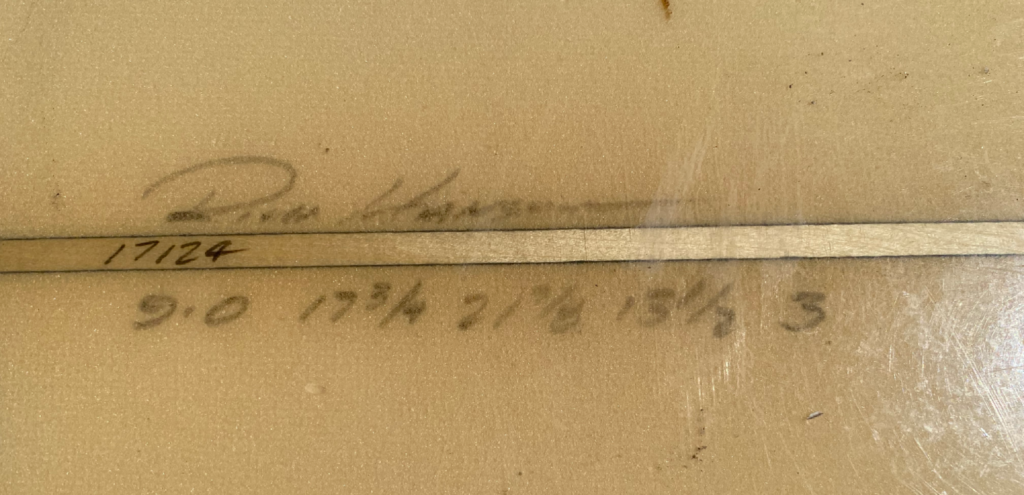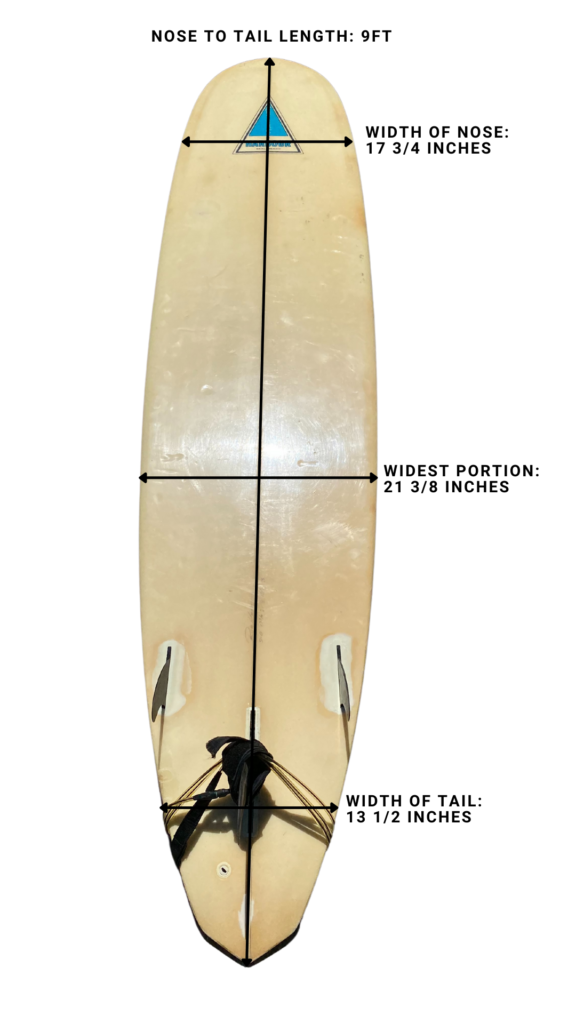Surfboard Dimensions Explained
Wes Severson June 14th, 2022 Posted In: Articles Tags: Surfing
Surfboard Dimensions Explained
If you are in the market for a new surfboard there are several things you need to know. Not only do you need to know the different parts of the surfboard, but knowing which dimensions of the board will suit you best is equally important.
It’s hard to tell the dynamics of a board just by looking at one which means beginners likely need to have surfboard dimensions explained to them. Our surfboard dimensions guide below will show you how to read surfboard dimensions so you can end any confusion.
The Basics
There are several key measurements to a surfboard that will help you figure out things like how hard the board will be to paddle, turn, and whether or not the board will have enough volume to keep you afloat. Most surfboards have the dimensions written on the bottom of the board. You can find it underneath the final layer of fiberglass. See in the picture below of one of my boards.

The numbers written on the board give you the surfboard’s five main dimensions. Keep in mind that some surfboards will only display four dimensions and what is written on the board depends on what type of surfboard it is and how old the surfboard is.
Length
You can see that the first number on the bottom of my board is 9. That means the length of the board from the nose to the tail is 9 feet. Surfboards come in all different lengths typically from five feet to over twelve feet. The length you need depends on your height, weight, surfing skill level, and the type of waves you will be riding.
My board at 9 feet is ideal for a beginner who needs a lot of buoyancy for easier paddling and who will be riding slow-moving waves.
Width
Next on the ‘how to read surfboard dimensions’ list is the width. On my board, the next three measurements after the 9 represent the different widths of the board. The width is the measurement from one edge or rail of the board to the other. The first number represents the width of the nose which lands at 17 ¾ inches.
The second number, 21 ⅜ inches, represents the widest part of the board. This is just above the center on my particular board. Remember, the wider the board, the better it floats. The width also adds to the stability which means the wider it is, the easier it is to ride. My board is very wide which makes it an ideal board for a beginner or novice surfer. Surfers with more experience will often have surfboards around 17 to 19 inches wide.
The third number you see, 13 ½ inches, is the width of the tail which on a longboard is typically the skinniest part of the board.
Thickness

The final number on the written surfboard dimensions on my board is the thickness of the board from the deck where you stand to the bottom along the rail. You can see that my board is 3 inches thick. The thickness measurement is generally taken at the thickest part of each surfboard.
Thickness is a very important dimension because it is a major factor in determining how buoyant your board will be. Buoyancy plays heavily when it comes to how easy your board is to paddle and how maneuverable it is in the water. The thicker the board is, the less maneuverable it will be. However, a thicker board has much more balance and is much easier to paddle than a thinner board.
Volume
Most boards made in the last 10 to 15 years will also have a volume measurement in liters. This gives you a quick idea of how well the board will float you. The higher the number of liters, the more floatation the board will have. For beginners, someone who weighs 90kg should ride a board with an equal amount of volume in liters. That means a board that has 90 liters of volume would be ideal. However, the more surfing skills you have the fewer liters you will need. For instance, a very skilled surfer could ride a board that has around 40% of their body weight in volume.
Since there are so many shapes and sizes of surfboards out there these days, finding the volume of your board can be somewhat difficult. It is best to use a surfboard volume calculator to figure out the exact volume of your board if it is not written on the deck.
Shortboard Dimensions
Since I used a longboard as my example to explain how to read surfboard dimensions, it is important to note that most shorter boards won’t feature three different measurements for thickness. Most of them will only contain one thickness measurement which indicates the widest part of the board. That means that the written dimensions on most shortboards made in the last 15 years will show the length, width, thickness, and volume.
Rocker
When you set a surfboard on the ground, you’ll notice that most surfboards are not completely flat. They have a slight concave at the nose and the tail which is called the rocker. Although this measurement is not listed on the written dimensions on your surfboard you can figure it out on your own by measuring from the ground to the nose which will give you a nose rocker measurement. You can do the same at the tail to get the tail rocker measurement.
Knowing the rocker of a surfboard will help you determine how much stability the board will have. A board that is almost flat will be much easier to stand up on than a board that has a dramatic curve. A board with a lot of rocker will be easier to maneuver on a wave than a board that is flatter.
Now that you’ve had surfboard dimensions explained, you should be able to better decipher what board will be best for your ability and size. Remember, each measurement makes a big difference, and getting advice from a surfer that has a lot of experience on different types of boards can really help you decide the measurements that would be best for you. Don’t be afraid to head to your local surf shop and ask for advice.

